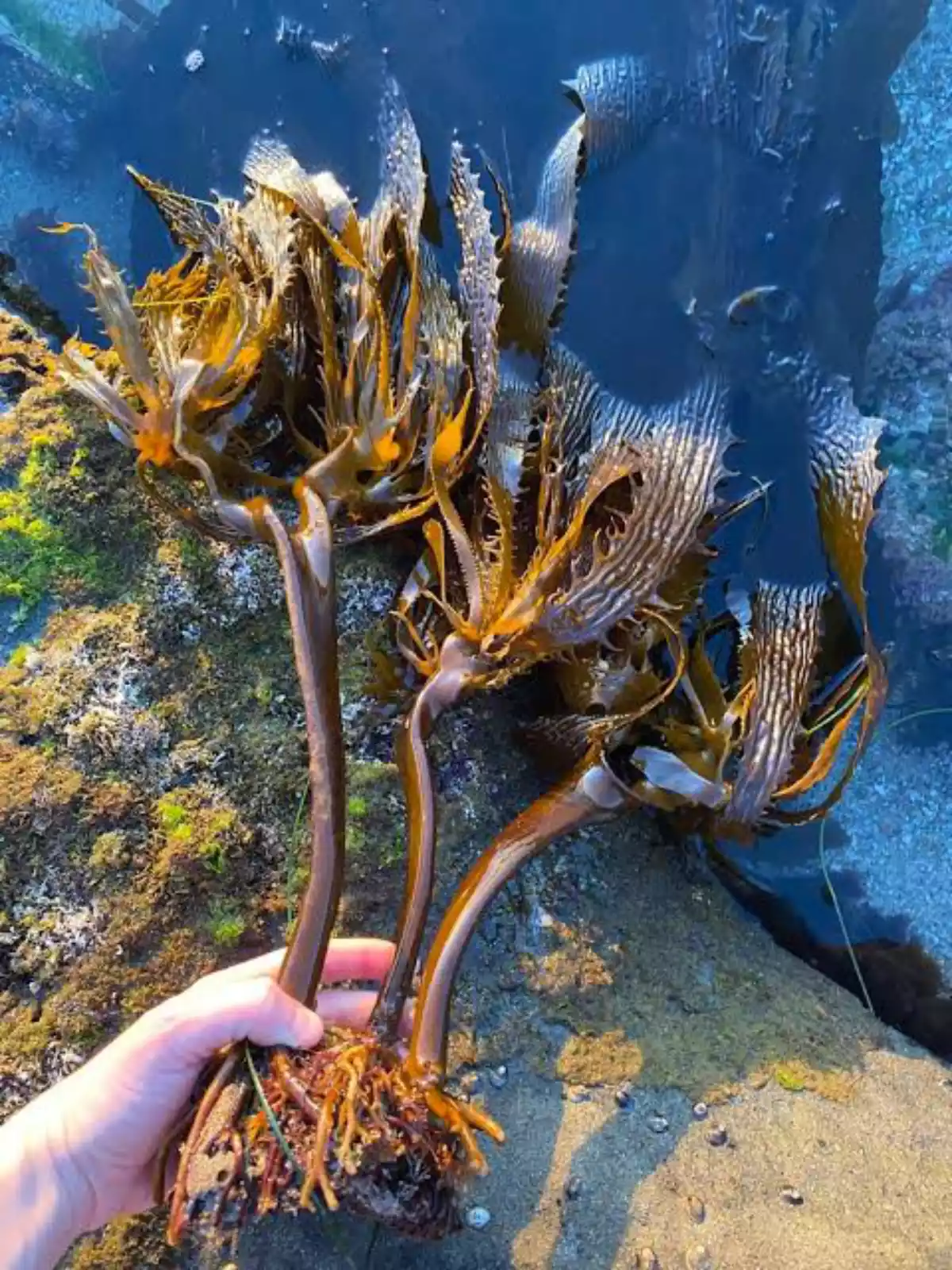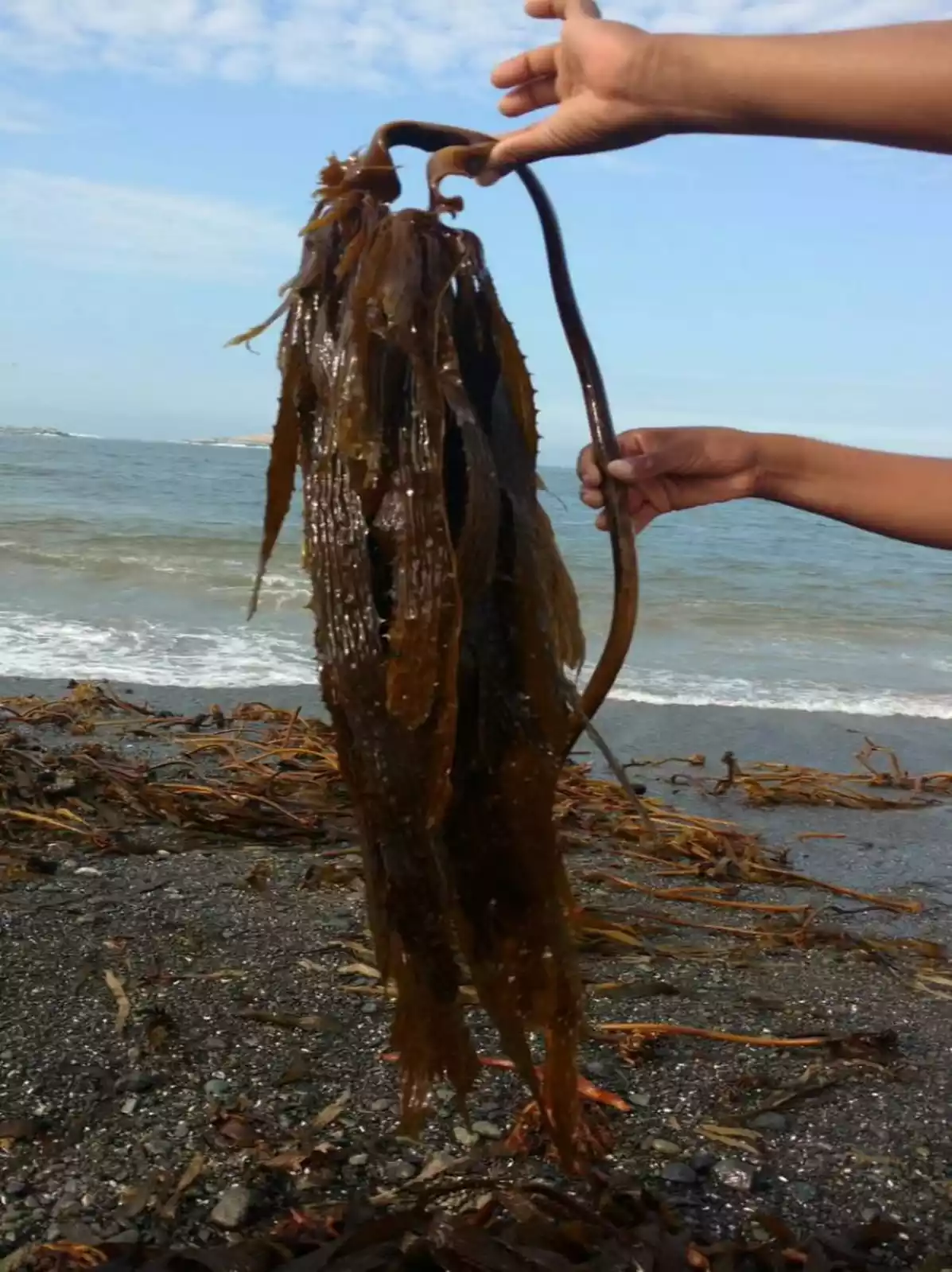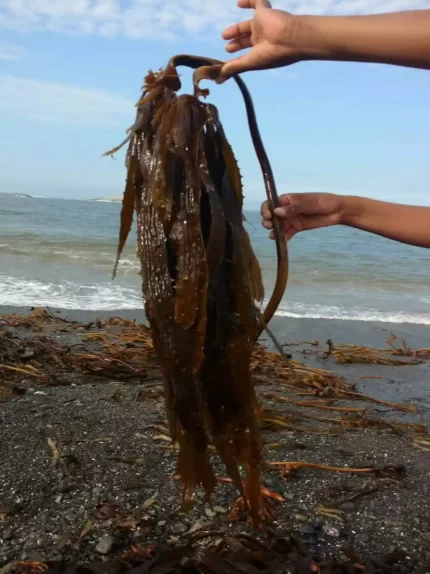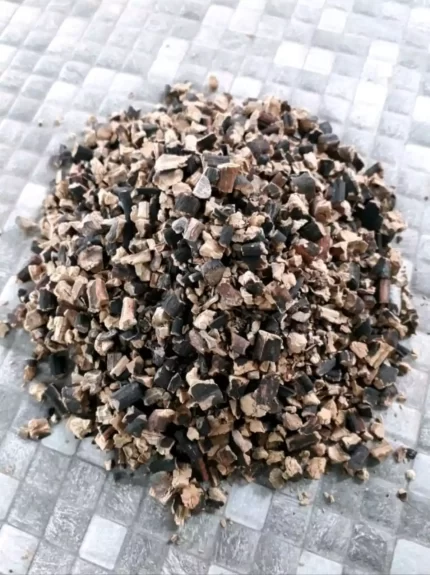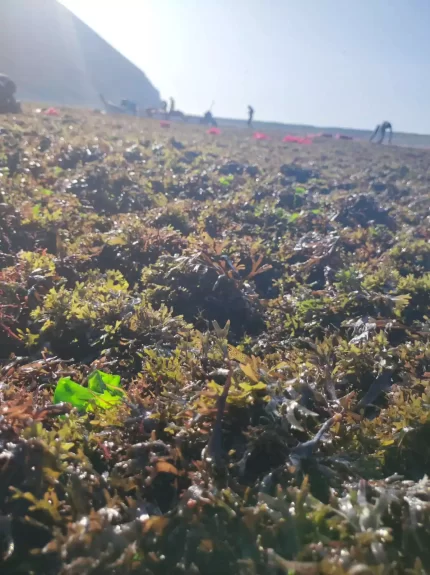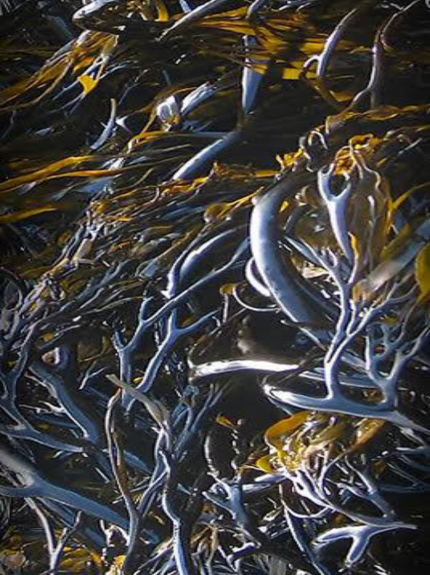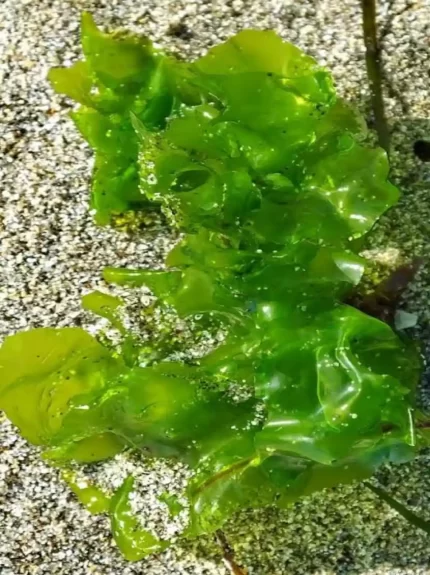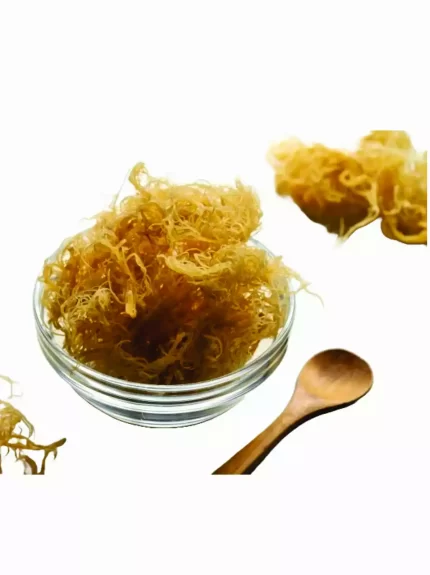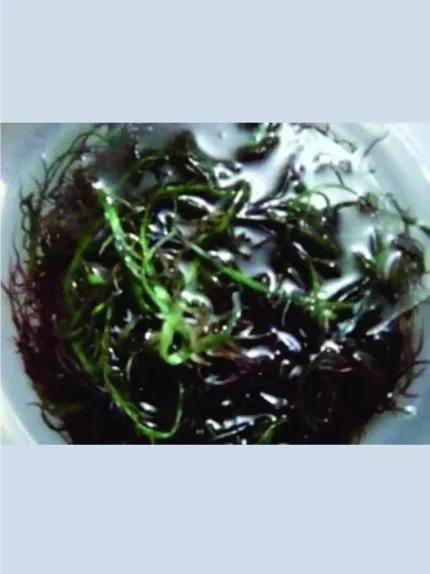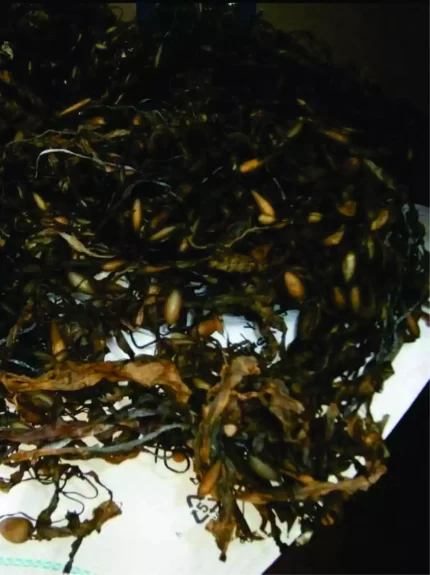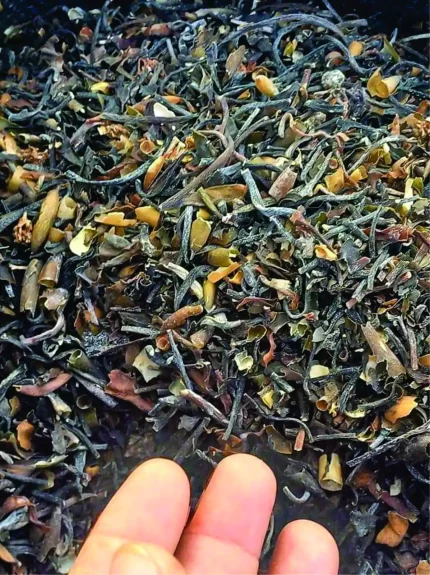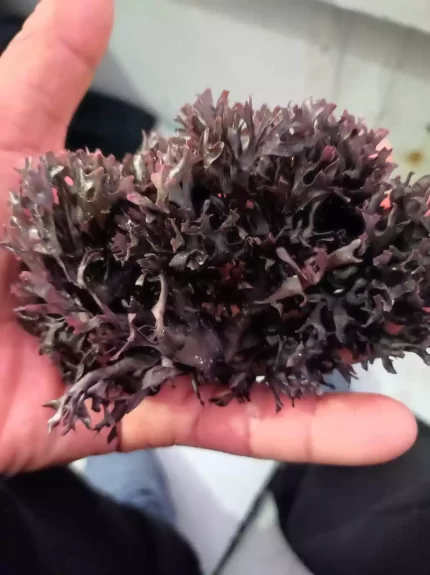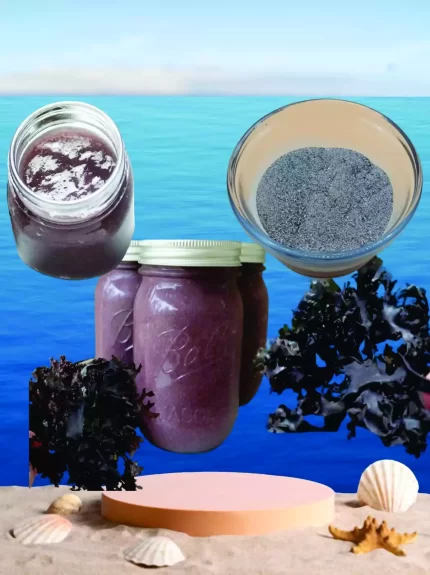Description
It is a brown algae of the Chromista species. It is a habitat-forming species that dominates the shallow rocky subtidal. Due to its vulnerability and restricted distribution in these forests, Eisenia should be considered a protected species. This species, with the appearance of a bush or tree, reaches about 2.5 m in length and is attached to the rocky substrate by a solid disk that is up to 20 cm high, is irregular in shape and is formed by hapteriums fused together. From this disc, between 1 and 30 thick, rigid, slightly flattened stipes originate. Each stipe branches 3 to 4 times in a dichotomous or subdichotomous manner.
Applications:
This seaweed is harvested by hand in the provinces of Casma and Huarmey, Ancash Region. It is mainly used for the production of alginates; as raw material for the production of fertilizers. It is also used in the production of dietary supplements and in the production of animal feed
Arame is a seaweed widely consumed in Asian countries, especially in Japan. It is meatier than wakame and has a milder flavor, which makes it suitable for any palate. It is difficult to find it fresh and the most common thing is to buy it dehydrated, which forces us to subject it to a rehydration process, which is simple and fast, as 10 or 15 minutes of immersion in warm water is enough. The rehydration water is usually discarded.
Although arame can be incorporated as an ingredient in hot dishes, it is more common for it to be eaten in salads, particularly mixed among other ingredients with seeds and sesame oil, which combines very well.
Arame is very rich in mineral salts and fiber, and low in fat, which makes it a very healthy and highly recommended ingredient. It is rich in alginate, an important culinary thickener, an ingredient for which it is also cultivated and collected.
The flavor is sweet and makes a wonderful addition to stir-fries, soups, salads, and grain dishes. This seaweed must be soaked before being added to food. When cooked, its size doubles. It is rich in Mannitol, a natural sugar that moderates the glycemia curve and is highly indicated for diabetics.
It provides mucilages, soluble viscous fiber that facilitates the protection of internal mucous membranes, especially the digestive system.
It also has a non-negligible contribution of minerals such as iron, iodine and calcium and a low sodium content. Vegetable iron is less bioavailable, therefore the consumption of the algae is recommended together with foods rich in Vitamin C.
Apart from the benefits indicated, it is recommended for cleansing the reproductive and urinary system.
Seaweed can be bought dry in organic, health food or oriental supermarkets and hydrated at home to be incorporated into soups, salads, scrambled eggs, woks, etc. These algae are extraordinarily healthy and have many health benefits.
They are low in calories and fat, but very high in nutrients (mostly bioavailable). Seaweed is especially rich in B vitamins, especially folic acid and vitamins C, E and K.
These sea delicacies are nutritionally recommended due to their high mineral content. They contain: iron, calcium, zinc, iodine, copper, magnesium, manganese, molybdenum, phosphorus, potassium, selenium, vanadium and more.
Arame seaweed is brownish-black in color and is very popular in traditional Japanese, Chinese, Korean, and Indonesian cuisine. Arame is widely harvested in the cool waters off the coast of South Korea and Japan. It grows up to a foot in length which is then cut into long, fine tufts. Arame subspecies are also found along the coast of Alaska and California.peru
Smooth flavor. The flavor is sweet and makes a wonderful enhancement to stir-fries, soups, salads, and grain dishes. This seaweed must be soaked before being added to food. When cooked, its size doubles.
THE BENEFITS OF ARAME SEAWEED ARE:
Reduces the risk of type 2 diabetes. Vanadium, found in seaweed, helps increase the sensitivity of cells to insulin and helps balance blood sugar levels, reducing the risk of type 2 diabetes.
Lower cholesterol. Seaweed has powerful antioxidant properties and has been shown to help lower total cholesterol, LDL cholesterol, and improve cardiovascular health.
Ingredients Arame seaweed (Eisenia arborea). Allergens May contain traces of soy, gluten, crustaceans and molluscs. How to use Wash and leave to soak for 10 minutes and then cook for another 15 minutes. Nutritional values per 100gr Energy value Kcal. 239 Kj. 993 Carbohydrates (gr) 67.9 Proteins (gr) 9.6 Soluble carbohydrates (gr) 1.4 Fats (gr) 1.9 Saturated (gr) 0.9 Fiber (gr) 43.8 Sodium (gr) 4.Packed in transparent plastic bags with the weight according to the client , packed in boxes with stipulated weight.
Store at room temperature in a dry place. Keep away from direct sunlight and direct contact with the ground. Once opened store in an airtight container in a dry place and consume before the date of consumption preferred – Intended use: Prior preparation of hydration and/or cooking is required.
– Hydration: Immerse yourself in water for 5 minutes. Once hydrated, it increases 6 times its weight dry
– Cook and use: For 20 minutes and use in salads, scrambled eggs, soups, creams, stews and casseroles. Battered and fried. As a thickener and stabilizer in the preparation of sauces, jams and desserts.
– Intention to consume: General public, except babies and young children. Final destination: In supermarkets, fruit and vegetable sections and/or organic products section; Specialized food stores, organic stores, greengrocers, herbalists and gourmets, national and international

